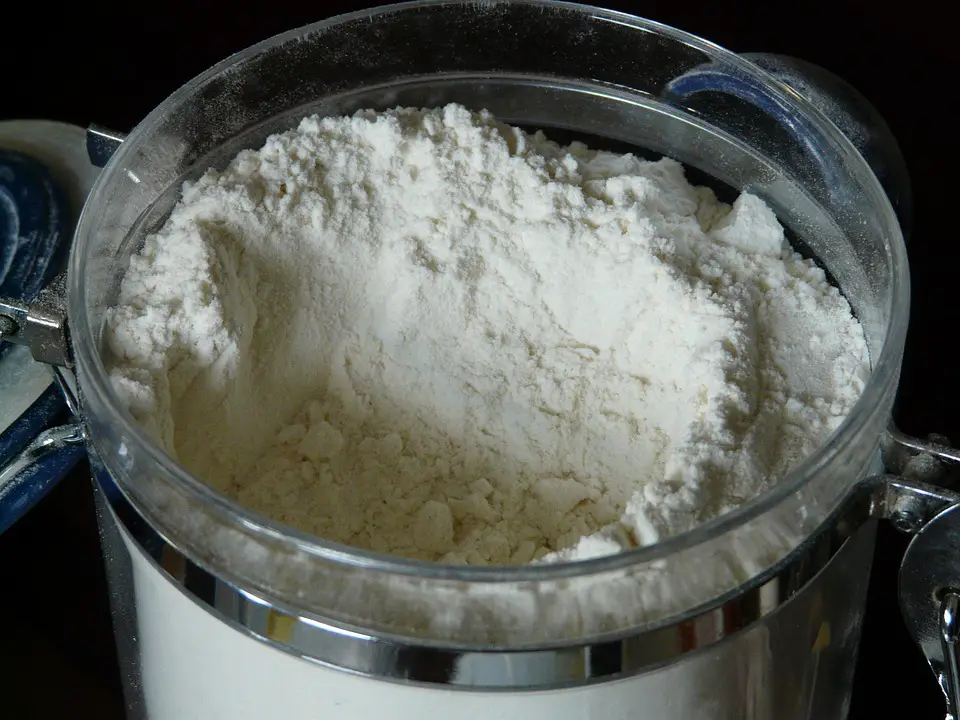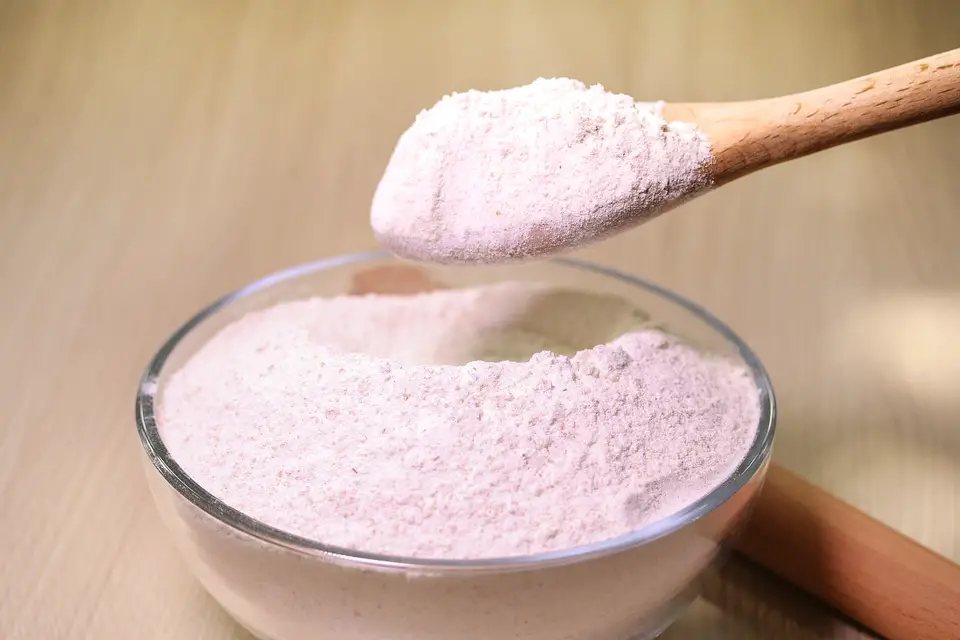Unless you’re a professional baker, you probably aren’t familiar with proper flour storage. But while flour can be stored in plastic bags, Mylar bags with oxygen absorbers are the only acceptable way to store flour for long periods. Bug-proof containers, plastic buckets, and canning jars are all acceptable storage options. These methods will increase the shelf life of flour. Read on to learn more about the proper methods for storing flour.
The baking pantry of a home cook has always needed flour. But now that more people than ever are baking and creating their sourdough starters, flour has become a valuable resource. It’s so popular that buying it comes at a price, much like many home essentials.

Many individuals keep flour in their pantry for a very long time, sometimes even after it has expired. If you’re planning to store flour for a long time, you’ll need to find a good airtight container. Buckets can hold up to 6 plastic bags, so a gallon of flour can be stored in one. For longer shelf life, you should purchase oxygen absorbers. You can get them for a very low price, and they’ll help keep flour fresher for longer.
So, you might be curious about how long flour can be stored safely.
This page discusses storing flour, whether it spoils properly, and the dangers of consuming it after it has expired.
About Flour
The grinding of uncooked grains, roots, beans, nuts, or seeds produces a powder known as flour. Flour is an essential ingredient in preparing a wide variety of dishes. Bread is considered a staple diet in many different cultures, and the primary component of bread is cereal flour, most specifically wheat flour.
Classifying flour according to the degree of processing it has undergone is common practice since this determines how long it may be stored. Additionally, the origin of the item, such as wheat or arrowroot, plays a role in the outcome.
Because of the differences in how they are produced, all-purpose white flour often maintains its quality for longer than whole-wheat flour.
White flour is the most refined wheat flour, meaning that the bran and germ have been removed from the grain, leaving only the starchy endosperm. On the other hand, flour made from whole wheat has all three components of a grain: the bran, the germ, and the endosperm.
Because the bran and germ are so full of oils, items made with whole wheat are more prone to going rancid. This happens when fats deteriorate due to exposure to light, moisture, or air, and the result is often a taste and odour that are not desired.
White flour may be less susceptible to rancidity than gluten-free options like almond or coconut flour, which tend to contain more oil than white flour.
In addition, gluten-free all-purpose flour, which often consists of a mixture of different flours derived from nuts or roots, may be more susceptible to mould growth due to a large amount of moisture it contains.
How Long can you Store Flour?
Let’s talk about how long flour lasts now that we understand why it doesn’t go good. You aren’t making educated guesses in the kitchen; you know that. Each sort of flour has a different shelf life.
From the chart below, you may get a general sense of how long the various varieties of flour will last. Whole grain flour, as you can see, has a shorter shelf life than white flour. This is so because whole grains still contain wheat germ, quickly becoming rancid.
| Flours | Shell Life |
| Whole-Wheat Flour | 3-6 months |
| All-purpose Flour | 6-9months |
| Cake Flour | 6-9 months |
| Bread Flour | 4-9 months |
| Rye Flour | 3-6 months |
| Self-rising Flour | 4-6 months |
| Oat Flour | 1-3 months |
| Barley Flour | 2-3 months |
| Gluten-Free or Alternative Flours(banana, buckwheat, coconut, nuts, rice, etc.) | 2-5 months |
Tips for Storing Flour Properly for Long Term
1. Cold Flour Storage
Keeping flour’s oils cold prevents rancidity. Like your bottle of pressed oil, the oils in flour can grow rancid.
If your freezer has room, it’s the ideal location to store flour because it prevents rancidity and kills pests after four days. Try this if you don’t bake much or have a huge freezer.
The fridge is another fantastic area, although the room is usually limited unless you have an extra fridge in the garage or basement. If you need to store a lot of flour, select a cool spot like a cellar, basement, or garage. If you require heat, close the vents in the room where you store flour.
For long-term storage, transport flour to an airtight container that can guard against aromas (flour absorbs scents) and frozen liquids. 4.3-quart OXO Pop is great. Square sides make freezing easy, and the large capacity fits a 5-pound bag of flour.
2. Dark Storage is Required for Flour
Light is the second adversary of wheat storage because it can promote oxidation, which is bad for fresh flour and heat generation (see Commandment 1). Darkness is a given if you store something in a refrigerator or freezer.
If you have a lot of flour, think about keeping the bags in the coldest area of your home, perhaps inside a cooler or thermal bag. Consider keeping it in an opaque container if you don’t have room in your fridge or freezer. Another option is a stoneware flour canister, such as this 16-cup food storage container. It is elegant and big enough to hold the majority of a five-pound bag of flour.
3. Airtight Storage for Flour is a Must
Slower spoilage when there is no air. This is crucial because the flour spoiling you are attempting to prevent is caused by oxygen—The flour is packaged in paper bags, which is good for the store, but once you get them home, you are in a hurry even if you leave them unopened. To store in a cold, dark location, at the very least, place the entire bag inside a three-gallon zip-top plastic bag and squeeze out as much air as you can before sealing.
You can also use a vacuum sealer and large vacuum bags to store full, unopened bags of flour or even portions of bags if you’re storing a lot and won’t require immediate access to everything.
4. Bug-Proof Containers
Bugs can cause a lot of problems when it comes to flour. They can make the food go bad fast, but there are ways to prevent this problem. The first step is to clean the pantry, discard the items infested with bugs, and vacuum the shelves. Use a natural cleaning spray to disinfect the areas around your flour. Flour bugs can also be prevented by properly storing them. Make sure to store it in airtight containers.
When storing flour, it is crucial to store it in an airtight container with a rubber seal. While plastic bags are fine for short-term storage, the wax paper does not offer adequate protection. If you cannot buy a bug-proof container, you can always place scotch tape on the lid and check for mites. A few days left tucked in the back of cabinets and pantry drawers can also help.
5. Utilizing the Freezer
Maintaining the freshest flavour for your wheat and grains is important. A smart solution is to store your flour in the freezer in bags or containers. Before using the flour, let it sit until it reaches room temperature. It is still possible to store flour for many months, a year, or even longer.
How to Determine Whether Flour is Bad?
Expiration dates, often known as best-by dates, are placed on the bags of most packaged flours to show how long they will keep fresh.
These labels don’t indicate safety and aren’t required. Consequently, even after the “best-by” date, your flour can still be fine to eat (9).
You should smell your flour to find out if it is safe. Fresh flour smells neutral; however, bad flour has an odd scent that can be almost sour, musty, or stale. It could also appear discoloured.
Large clumps of mould may also develop if your flour has come into touch with dampness or water. In this situation, you should toss the entire bag right away.
When your flour is getting close to or past its expiration date, think of inventive ways to use it to save food waste. It’s useful for making non-food items like playdough or homemade glue in addition to baked goods like bread and cakes, like those.
Drawbacks of Keeping Flour Around for a Long Time
It can be costly and bad for the environment to fill numerous little bags with 25 kg of flour. Additionally, it will require a lot of precious room to store it in the freezer. Most bakers keep a third or a half of their flour in a long-term solution. Keep the remainder in a cool location.
Risks of Consuming Expired Flour
Rancidity occurs when flour’s molecular structure changes, which may produce hazardous chemicals (10Trusted Source).
However, current research has not found any negative impacts of consuming rancid flour. Even though it may not taste good when cooked, foods produced with it are unlikely to harm your health if consumed in moderation.
On the other side, mouldy flour can be poisonous and harmful.
Not all moulds are deadly, but some can release toxic substances known as mycotoxins. These substances may cause nausea and diarrhoea (11Trusted Source).
According to the amount consumed and the length of exposure, mycotoxins are also connected to other severe ailments, such as cancer and liver disease (12Trusted Source, 13Trusted Source).
Therefore, if your flour smells musty or appears to be mouldy, it is always advisable to toss it out.
Conclusion
Although flour has a long shelf life, it usually expires in 3 to 8 months. Because it contains less fat than whole-wheat and gluten-free flour, white flour may last the longest. Flour’s shelf life can be increased by properly sealing, cooling, or freezing it. If your flour has bad odours, colour changes, or mould growth, toss it away.
If you’re looking to use leftover flour in your kitchen, there are several ways to keep the powder fresh. First, make sure to remove it from its paper packaging. Next, store the flour in a cool, dark place away from light, heat, and bugs. Another way to prolong the shelf life of your flour is to use a moisture absorber. These tips will ensure the flour stays fresh for at least ten years.

